Some gods grant riches and others good luck, but one deity in India offers a much less nebulous fortune to his devotees: tickets to a new life in the US.
More than 1,000 Hindu faithful visit the Chilkur Balaji temple each day in the belief that the divine presence inside can bless worshippers with a successful visa application. Those seeking a shot at the American Dream are instructed to pray for their permission to travel abroad, and to return to give thanks when they receive it.
“Every single member of my family who is in the US has come here,” said Satwika Kondadasula while walking around the temple’s sanctum. The 22-year-old said that moving to New York was a longstanding dream. She will head there this week to start her master’s degree and says she has the deity Balaji in part to thank. “I got the visa because of my capability of course, but I have luck of god as well,” she said. “I definitely believe coming here really helped me out.”
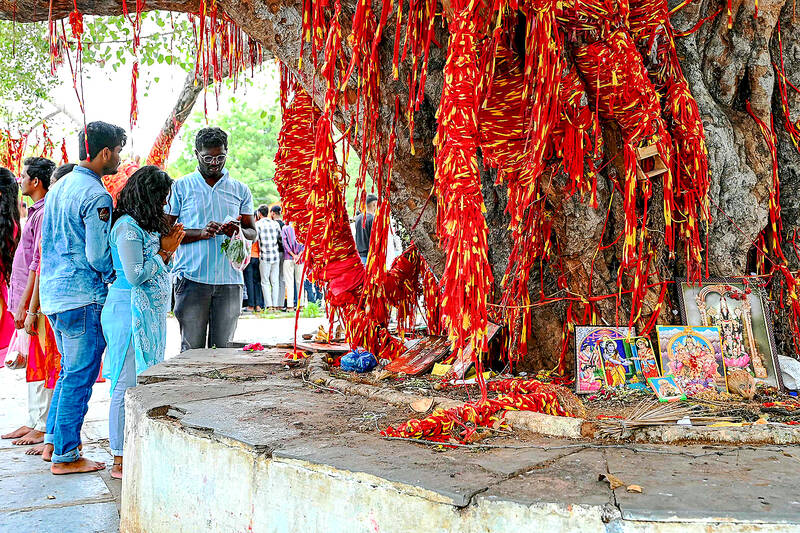
Photo: AFP
Balaji is considered an incarnation of Vishnu, one of the key gods of the Hindu pantheon known for upholding the cosmic order of the universe. The temple bearing his name on the outskirts of Hyderabad was not always known as a conduit for international travel. Its elderly priest C.S. Gopalakrishna discovered in 1984 that water spontaneously appeared before a shrine to the god when he walked around the perimeter of the temple’s sanctum 11 times. Word spread and people began visiting the temple to offer wishes for happy marriages, children, or successfully navigating the cut-throat admissions process to India’s top colleges.
‘BLIND BELIEF’
Over the decades, devotees came to believe the shrine was particularly effective helping Indians seeking to leave the country — so much so that it came to be locally known as the “visa temple.”
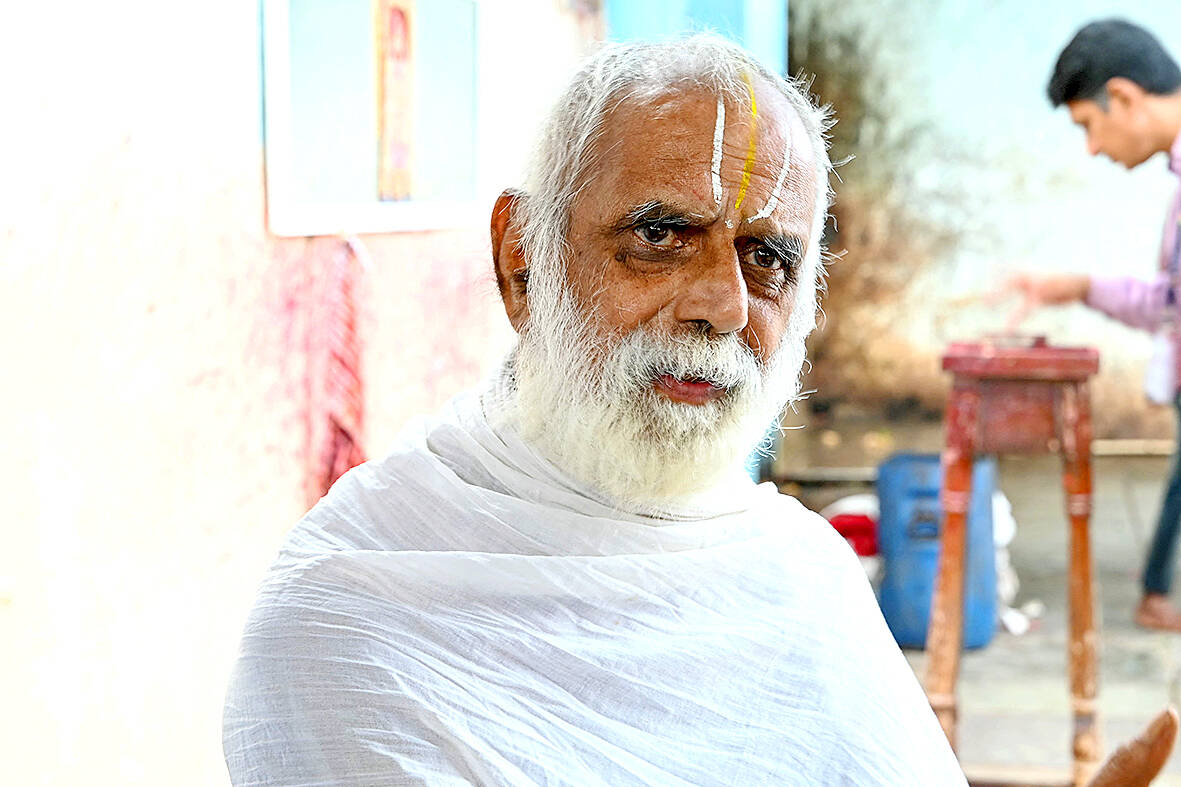
Photo: AFP
Pilgrims emulate Gopalakrishna’s 11 laps around the temple sanctum, returning later if their wishes are filled to circumnavigate it a further 108 times as an expression of gratitude.
The ritual demands precision. Visitors chanting Balaji’s name in unison keep track of the longer walk with the aid of yellow sheets of paper marked with numbered boxes given out by the temple. Gopalakrishna says that divine intervention is not guaranteed, and his god helps those who help themselves. “You should work hard,” he said. “Balaji will help if you have blind belief in him.”
‘DREAM LAND’
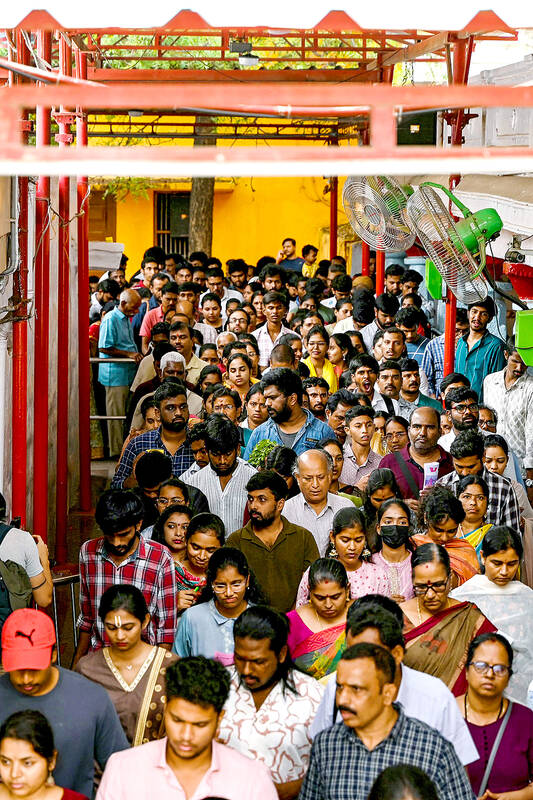
Photo: AFP
India is now the world’s fifth-largest economy and still enjoys world-beating GDP growth, but hundreds of thousands of its citizens still leave the country each year seeking better opportunities abroad.
While the diaspora spans the globe, the US remains the destination of choice.
The most recent census there showed its Indian-origin population had grown by 50 percent to 4.8 million in the decade to 2020, while more than a third of the nearly 1.3 million Indian students studying abroad in 2022 were in the US.
“America is still the dream land,” said visa consultant Sakshi Sawhney, who helps Indians negotiate the often perplexing paperwork needed to travel to Western countries.
“That is not going away anytime soon.”
‘BETTER POSITIONS’
Sawhney lived for a time in the US before returning to guide others through the process, and said she herself had visited the Balaji temple while waiting for her visa. While she does not tell her clients to pray there, she says many tell her that they had done so of their own accord.
Looming presidential elections have focused attention on the heights Indian-origin Americans have scaled. The mother of Democratic nominee Kamala Harris was born in the southern city of Chennai before her acceptance to Berkeley for her master’s degree aged 19. The wife of Donald Trump’s pick for vice-president, Usha Vance, was born in San Diego to Indian immigrant parents with family roots not far from the temple.
“It is a great, inspiring moment. Indians are moving around the world and they are in better positions right now,” said Ajay Kumar, at the Balaji shrine. Kumar, 25, has returned to the temple to give thanks to the deity, brimming with excitement before his imminent departure to Tampa Bay, where he will work as a chef.
“America is the place where all my dreams will be fulfilled,” he said.
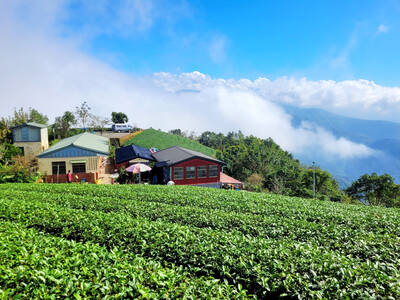
Every now and then, it’s nice to just point somewhere on a map and head out with no plan. In Taiwan, where convenience reigns, food options are plentiful and people are generally friendly and helpful, this type of trip is that much easier to pull off. One day last November, a spur-of-the-moment day hike in the hills of Chiayi County turned into a surprisingly memorable experience that impressed on me once again how fortunate we all are to call this island home. The scenery I walked through that day — a mix of forest and farms reaching up into the clouds

With one week left until election day, the drama is high in the race for the Chinese Nationalist Party (KMT) chair. The race is still potentially wide open between the three frontrunners. The most accurate poll is done by Apollo Survey & Research Co (艾普羅民調公司), which was conducted a week and a half ago with two-thirds of the respondents party members, who are the only ones eligible to vote. For details on the candidates, check the Oct. 4 edition of this column, “A look at the KMT chair candidates” on page 12. The popular frontrunner was 56-year-old Cheng Li-wun (鄭麗文)
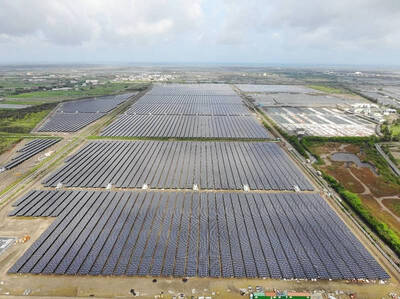
“How China Threatens to Force Taiwan Into a Total Blackout” screamed a Wall Street Journal (WSJ) headline last week, yet another of the endless clickbait examples of the energy threat via blockade that doesn’t exist. Since the headline is recycled, I will recycle the rebuttal: once industrial power demand collapses (there’s a blockade so trade is gone, remember?) “a handful of shops and factories could run for months on coal and renewables, as Ko Yun-ling (柯昀伶) and Chao Chia-wei (趙家緯) pointed out in a piece at Taiwan Insight earlier this year.” Sadly, the existence of these facts will not stop the

Oct. 13 to Oct. 19 When ordered to resign from her teaching position in June 1928 due to her husband’s anti-colonial activities, Lin Shih-hao (林氏好) refused to back down. The next day, she still showed up at Tainan Second Preschool, where she was warned that she would be fired if she didn’t comply. Lin continued to ignore the orders and was eventually let go without severance — even losing her pay for that month. Rather than despairing, she found a non-government job and even joined her husband Lu Ping-ting’s (盧丙丁) non-violent resistance and labor rights movements. When the government’s 1931 crackdown